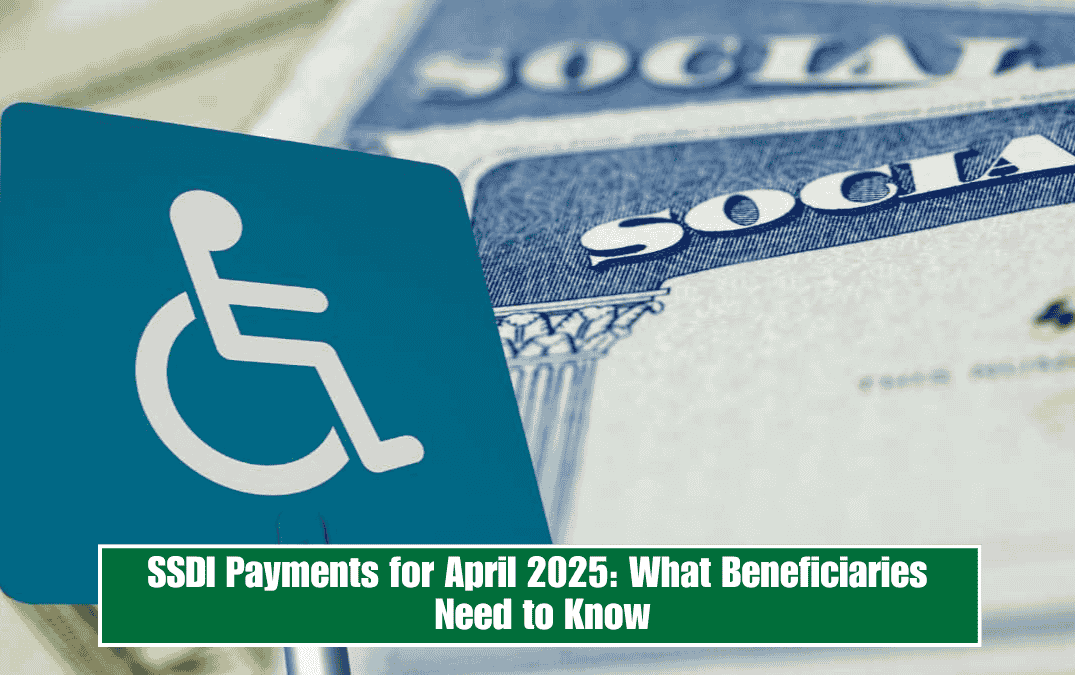Social Security Disability Insurance (SSDI) April 2025 Payments: Dates, Amounts, and Important Updates
The Social Security Disability Insurance (SSDI) program is a vital federal support system for people in the United States who are unable to work due to serious medical conditions. Managed by the Social Security Administration (SSA), SSDI provides monthly payments to help disabled individuals and their families manage basic living expenses.
But as April 2025 rolls in, it’s important to understand who will receive SSDI payments this month, how much they might receive, and how recent changes in the SSA may affect future services.
What Is SSDI and Who Qualifies?
SSDI supports individuals who are medically unable to work for at least 12 months or are expected to die from their condition. Eligibility isn’t based on income but rather on work history. Workers earn credits each year based on their income. Most people need about 40 credits, with at least 20 earned in the last 10 years, to qualify for benefits. Younger workers may qualify with fewer credits.
- The application process can be lengthy—usually taking three to five months—and requires extensive documentation of medical conditions and work history. Unlike Supplemental Security Income (SSI), which is needs-based, SSDI is not limited by income or resources.
Family Members May Also Be Eligible
SSDI benefits can extend to spouses over age 62, children under 18, or children up to age 19 who are full-time high school students. A spouse caring for a child with a disability may also qualify. These family members can receive up to 50% of the main benefit amount, although the total combined family benefits cannot exceed 180% of the primary beneficiary’s amount.
April 2025 SSDI Payment Schedule: Only Two Groups Left
For the month of April 2025, SSDI payments are made on different days depending on when you started receiving benefits and your birthdate.
Here’s the full breakdown:
April 3, 2025:
For recipients who started receiving SSDI before May 1997 (already paid)
April 9, 2025:
For those born between 1st and 10th of any month (already paid)
April 16, 2025:
For those born between 11th and 20th of any month
April 23, 2025:
For those born between 21st and 31st of any month
That means only two groups of SSDI recipients are still waiting for their checks in April: those with birthdays from the 11th to 31st who began receiving benefits after May 1997.
How Much Will SSDI Beneficiaries Receive in 2025?
SSDI payments are calculated based on a worker’s average lifetime earnings. In 2025:
The maximum monthly SSDI benefit is $4,018, available to those with high, consistent incomes before becoming disabled.
The average SSDI monthly benefit is around $1,580, reflecting varying work histories and earnings.
Each year, SSDI payments are adjusted for inflation using the Consumer Price Index for Urban Wage Earners and Clerical Workers (CPI-W) to protect against the rising cost of living.
How Are Benefits Calculated?
The SSA uses a formula that considers your highest 35 years of earnings. If you didn’t work for a full 35 years, your missing years are filled in with zeroes, which can lower your benefit. After age 67, known as your Full Retirement Age (FRA) for most, SSDI payments are automatically converted into retirement benefits. There’s no change in the amount, just a change in the program.
Will SSA Layoffs Affect SSDI Payments?
In 2025, the SSA implemented a 12% staff cut and closed 27 field offices, as part of a digital transformation initiative. This was introduced under federal cost-cutting measures led by President Donald Trump and Department of Government Efficiency head Elon Musk.
While the SSA assures that benefit payments will not be delayed, the reduction may cause longer wait times for application reviews, appeal processes, and limited access to in-person services. Disability rights organizations have raised concerns that these cuts could make the already complex SSDI process even harder for vulnerable applicants.
Important Notes for SSDI Recipients
No Financial Resource Limit – Unlike SSI, SSDI doesn’t limit how much money or property you can own.
- Taxable Income – SSDI may be taxable, depending on your total income. Individuals earning over $25,000/year (or $32,000/year if married filing jointly) may owe taxes on part of their SSDI benefits.
- Long-Term Impact – Although SSDI benefits stop once you reach retirement age, they become part of your regular retirement benefits, with no need to reapply.
If you are expecting an SSDI check this April, you will receive your payment on either April 16 or April 23, depending on your birthdate. Payments remain on schedule, despite changes within the SSA, and amounts vary depending on your work history. For those needing help, applying online is the fastest option, especially with SSA office closures.
While the SSA shifts to more digital services, it’s more important than ever to stay informed and organized. Make sure to monitor your My Social Security account online for updates, payment history, and tax details.















